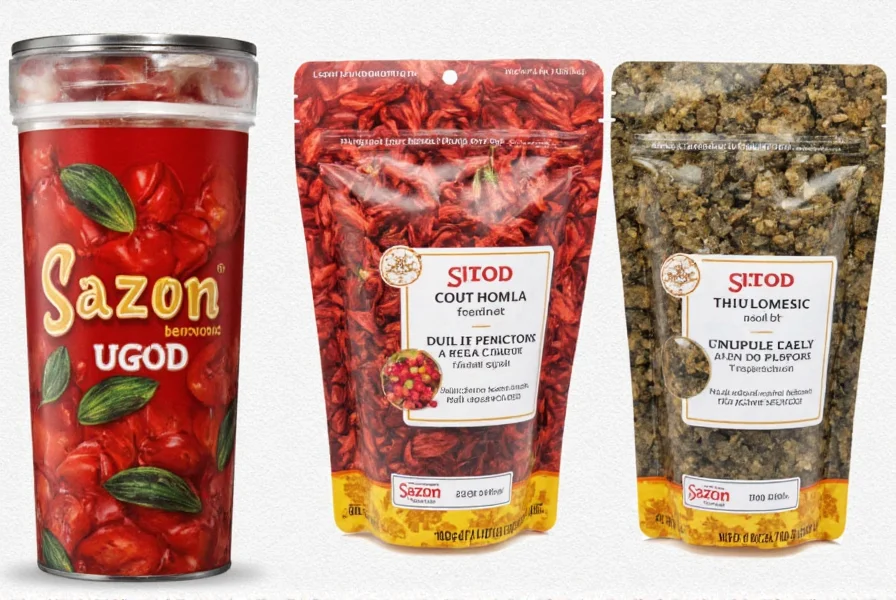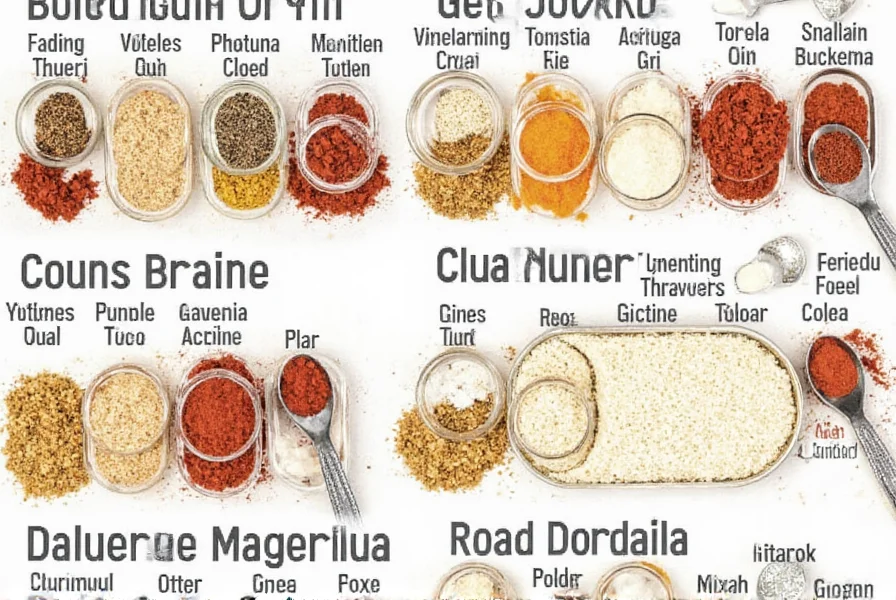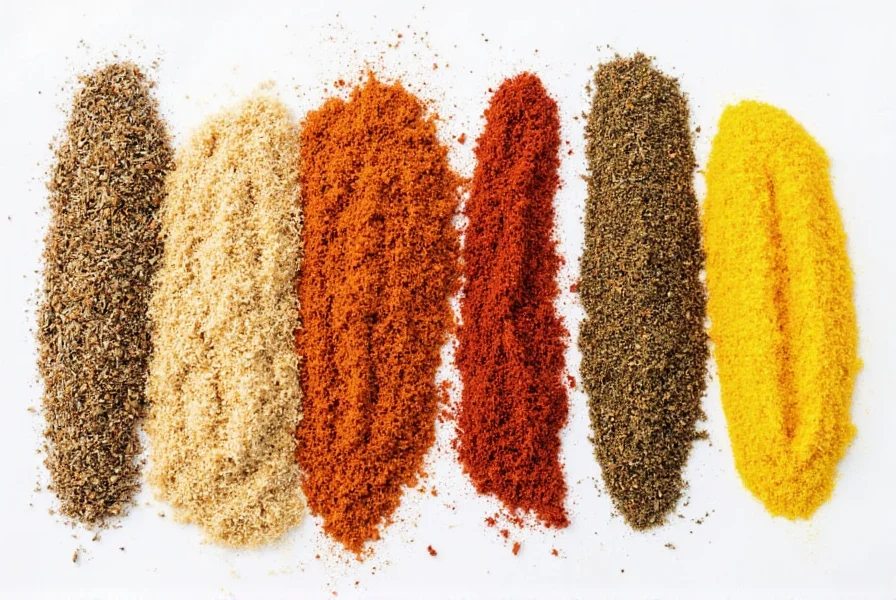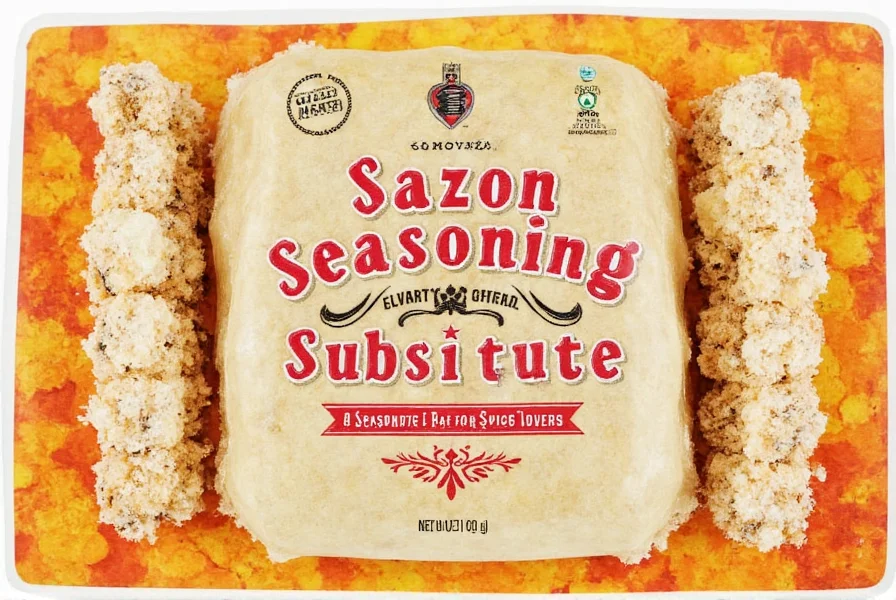Table of Contents
If you're searching for a sazon seasoning substitute, the best option depends on your specific needs. For the closest match to authentic Latin flavor, a homemade blend of garlic powder, onion powder, cumin, and oregano works perfectly. Mexican taco seasoning is the top store-bought alternative for most dishes. This guide covers expert-tested substitutes with precise usage tips, flavor comparisons, and dietary adaptations for every recipe.
Introduction to Sazon Seasoning
Sazon is a traditional Latin American spice blend essential for authentic dishes like arroz con pollo, beans, and grilled meats. Its signature yellow-orange color comes from annatto (achiote), while key ingredients include garlic, onion, cumin, and oregano. When you run out of sazon or need a dietary adjustment, these substitutes deliver comparable flavor profiles without compromising authenticity.

Why You Might Need a Sazon Seasoning Substitute
People seek sazon alternatives for practical reasons:
- Running out of sazon during meal prep
- Reducing sodium intake for health reasons
- Using pantry staples instead of specialty ingredients
- Dietary restrictions like gluten-free or vegan needs
- Experimenting with regional flavor variations

Common Sazon Seasoning Substitutes
These substitutes are ranked by authenticity and versatility. For most dishes, homemade blends outperform store-bought options.
1. Homemade Sazon Mix (Most Authentic)
This DIY version replicates traditional sazon perfectly. Combine 2 tsp garlic powder, 2 tsp onion powder, 1 tsp ground cumin, 1 tsp dried oregano, and a pinch of annatto powder (for color). Adjust salt to taste. Best for: Rice dishes, beans, and grilled meats where authentic Latin flavor is critical.

2. Mexican Taco Seasoning (Best Store-Bought)
Contains cumin, garlic powder, onion powder, and chili powder. While lacking annatto for color, it's widely available and perfect for tacos, fajitas, and quick weeknight meals. Best for: Tacos, burritos, and dishes needing bold spice without specialty ingredients.

3. Creole Seasoning (Spicy Alternative)
Features paprika, garlic, onion, and black pepper. Offers a smoky, spicy profile ideal for Cajun-style dishes. Best for: Seafood, grilled chicken, and dishes requiring heat without Latin-specific flavors.

4. Garam Masala (Complex Flavor Option)
Indian blend with cumin, coriander, cardamom, and cloves. Creates warm, aromatic notes but lacks sazon's earthy undertones. Best for: Roasted vegetables, lentil stews, and fusion dishes needing depth.

5. Herbs de Provence (Mild Substitute)
French blend with thyme, rosemary, and lavender. Delivers floral notes but misses sazon's savory profile. Best for: Roasted potatoes, soups, and dishes needing subtle herbaceousness.

How to Use a Sazon Seasoning Substitute
Follow these precise guidelines for optimal results:
- Rice dishes: Use 1 tsp homemade mix per cup of uncooked rice. Add annatto powder for authentic color.
- Meat marinades: For chicken or beef, combine 2 tbsp taco seasoning with lime juice and olive oil.
- Low-sodium versions: Omit salt from homemade blends. Use 50% less store-bought substitutes.
- Adjusting intensity: Start with half the recommended amount, then taste and incrementally add more.

Buying Guide: Finding the Best Sazon Seasoning Substitute
When purchasing substitutes, prioritize these factors:
1. Check for Annatto (for Color)
Traditional sazon's yellow hue comes from annatto. Look for it in ingredient lists if color matters. Brands like Goya offer annatto-enhanced taco seasonings.

2. Sodium Content
For low-sodium diets, choose brands like McCormick's Low-Sodium Taco Seasoning or make your own blend without added salt.
3. Recipe-Specific Selection
Use taco seasoning for Mexican dishes, Creole for seafood, and homemade mix for authentic Latin recipes. Avoid Herbs de Provence for traditional Latin dishes.
4. Trusted Brands
Stick to reputable brands: Goya, McCormick, and Penzeys for consistent quality. Avoid generic store brands with unclear ingredient lists.
5. Read Recent Reviews
Check Amazon or grocery site reviews for recent feedback. Look for comments about flavor authenticity and sodium levels.

Frequently Asked Questions
What is the closest substitute for sazon seasoning?
The homemade blend of garlic powder, onion powder, cumin, and oregano (with annatto for color) is the closest match. For store-bought options, Mexican taco seasoning is the best alternative, though it lacks annatto's signature hue.
Can I make my own sazon seasoning substitute at home?
Yes! Combine 2 tsp garlic powder, 2 tsp onion powder, 1 tsp ground cumin, 1 tsp dried oregano, and a pinch of annatto powder. Store in an airtight container for up to 6 months. This gives you full control over sodium and ingredients.
Is there a low-sodium sazon substitute?
Absolutely. Omit salt from homemade blends or choose brands like McCormick's Low-Sodium Taco Seasoning. For restaurant-quality results, use 50% less of regular substitutes and enhance flavor with fresh garlic or lime juice.
What's the difference between sazon and adobo seasoning?
Sazon contains annatto for yellow color and focuses on cumin and oregano, while adobo is brown/tan with more garlic, oregano, and black pepper. Sazon is ideal for rice dishes; adobo works better for meats. They're not fully interchangeable but can substitute in a pinch.
Can I use taco seasoning instead of sazon?
Yes, but with adjustments. Taco seasoning lacks annatto, so add 1/4 tsp paprika for color. For authentic Latin flavor, combine 1 tbsp taco seasoning with 1/2 tsp cumin and a pinch of annatto powder.
What gives sazon its distinctive color?
Annatto (achiote) seeds create the vibrant yellow-orange hue. This natural coloring agent also adds subtle earthy notes. If substituting, add 1/8 tsp annatto powder to any blend for authentic appearance.
How much substitute should I use for sazon in recipes?
Start with a 1:1 ratio. For homemade blends, use 1 tsp per serving. For store-bought taco seasoning, reduce by 25% due to higher salt content. Always taste and adjust before serving.
What's the best sazon substitute for rice dishes?
Homemade blend is ideal. Use 1 tsp per cup of uncooked rice. Add 1/8 tsp annatto powder for color and 1/4 tsp extra cumin for depth. Avoid Herbs de Provence or Garam Masala for traditional rice dishes.
Can I use garam masala as a sazon substitute?
Only for fusion dishes. Garam masala's cardamom and cloves create Indian-inspired flavors. For Latin dishes, use it sparingly (50% less than sazon) and add extra cumin to balance.
Conclusion
Whether you need a quick pantry solution or authentic Latin flavor, the right sazon substitute transforms your dishes. For most recipes, the homemade blend delivers superior results with customizable sodium levels. Store-bought taco seasoning works well for Mexican-inspired meals, while Creole seasoning adds spice to seafood. Always prioritize annatto for color and adjust quantities based on your dish. With these expert-tested options, you'll never be without flavorful seasoning again.
| Substitute | Key Ingredients | Best For |
|---|---|---|
| Homemade Sazon Mix | Garlic powder, onion powder, cumin, oregano, annatto | Rice dishes, beans, grilled meats |
| Mexican Taco Seasoning | Chili powder, cumin, garlic, onion | Tacos, burritos, quick weeknight meals |
| Creole Seasoning | Paprika, garlic, onion, black pepper | Seafood, grilled chicken, spicy dishes |
| Garam Masala | Cumin, coriander, cardamom, cloves | Roasted vegetables, lentil stews, fusion dishes |
| Herbs de Provence | Thyme, rosemary, lavender, marjoram | Potatoes, soups, mild herbaceous dishes |











 浙公网安备
33010002000092号
浙公网安备
33010002000092号 浙B2-20120091-4
浙B2-20120091-4